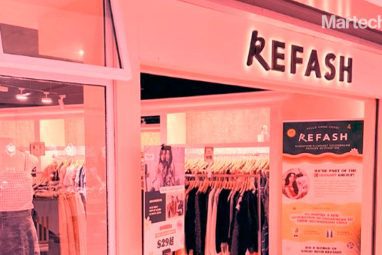Lack of Site Image Analytics, Slow Load Time Can Cost Brands Their Customers: Report
LiquidPixels, the dynamic imaging solutions provider, announced the results of a new survey that surfaced fears from eCommerce and retail website leaders over the effects of sub-optimal image performance on their websites. A lack of site image analytics and increased complaints about slow load times have retail leaders anxious about the holiday season. Worries include […]
Topics

LiquidPixels, the dynamic imaging solutions provider, announced the results of a new survey that surfaced fears from eCommerce and retail website leaders over the effects of sub-optimal image performance on their websites.
A lack of site image analytics and increased complaints about slow load times have retail leaders anxious about the holiday season. Worries include sagging sales, second-page SERP rankings, unsatisfactory SEO standings, and the overall competitiveness of their businesses.
The survey targeted 600 senior executives of eCommerce and retail-based companies with more than 250 employees. Thirty-seven per cent of the respondents were employed with companies of more than 5,000 employees, and all respondents were with companies doing greater than $20 million in sales.
Also Read: Is Social Commerce The Future of Shopping?
Seventy per cent of those surveyed said their customers sent in complaints about their website’s performance. The top issue, with 49 per cent of the vote, was “Your website is very slow.” Thirty-six per cent complained that their device did not show product pictures; another 36 per cent said they could not see details about the product, and 35 per cent said they could not zoom in or out of the product image on their device.
The ability to manipulate images on mobile devices is increasingly important, as last September, Google started to index websites according to how well their pages were optimised for a mobile-first experience.
“These results do not surprise us,” said Steve Kristy, CEO, LiquidPixels. “Page load time is crucial to the overall customer experience. Companies may have a beautiful website and exceptional products, but if their site loads too slowly, shoppers will get frustrated and move on.”
Eighty-four per cent of respondents said they were either “slightly” or “very concerned” about how images affect their website’s performance. As a result, 66 per cent felt their organisation was losing traffic and potential customers to competitors with better, faster websites. Sixty per cent felt their SERP rankings and SEO standings were suffering because of website speed, and more than 50 per cent felt that abandoned shopping carts were a “major challenge” for their company. On top of this, 74 per cent of the respondents were worried about the rising costs of maintaining an eCommerce website.
“Google ranks fast sites higher in search results versus those which are slower,” added Kristy. “Optimising the images on a site is painless and automatic, resulting in the most significant improvement in page load speed with the highest ROI across all platforms.”
Eighty-one per cent of respondents indicated they are planning on making upgrades to their sites in 2022, with 78 per cent saying they will invest in imagery tech to increase their company’s competitiveness in the eCommerce space. When asked about the budget for upgrades, 47 per cent indicated they were willing to spend between $100,000 and $1,000,000. Twenty-four per cent had more than $1,000,000 allocated for improvements.
“Imagery is the most powerful selling tool on any website,” said Kristy. “It is the virtual window into your store to entice customers to explore products and to fill their shopping carts. We are encouraged to see that retailers are investing in imagery technology that will make them competitive in this new selling environment.”






